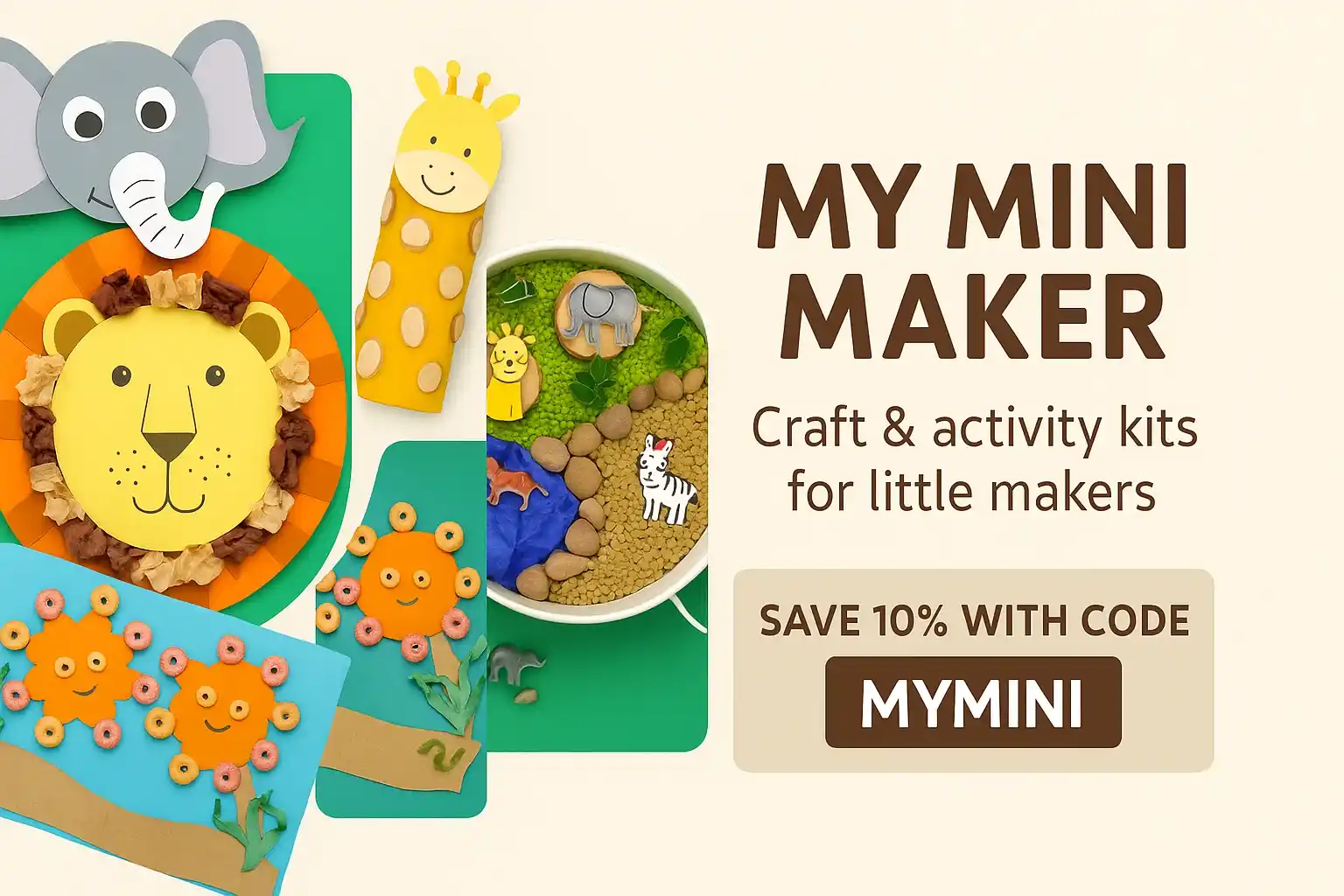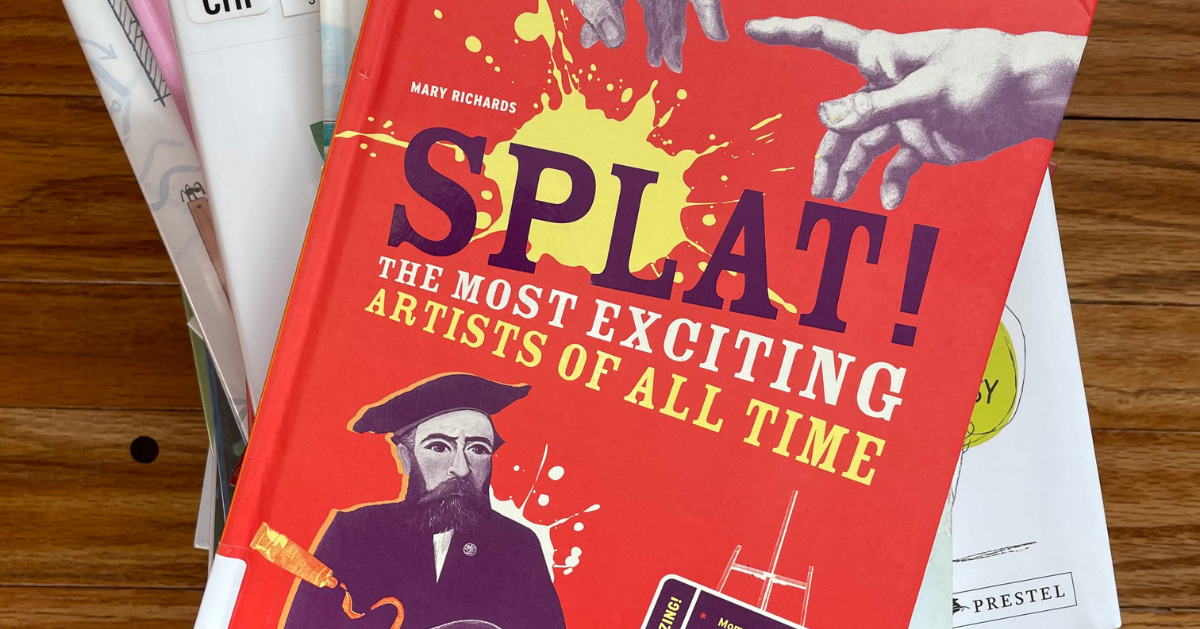# Inspiring Young Artists: A Collection of Children’s Books About Creativity
A childhood rich in creative pursuits often sparks a lifelong love of the arts. If your children are captivated by painting, drawing, or sculpting, they might naturally become curious about the artists who have shaped our world and the stories behind their masterpieces. This curated list presents a selection of inspiring books designed to ignite their imaginations and foster an appreciation for artistic expression. These aren’t just stories *about* art; they’re celebrations of creativity itself, perfect for budding artists and art enthusiasts alike.
## Exploring Artistic Lives & Techniques
These books offer a glimpse into the lives and processes of renowned artists, demonstrating that creativity comes in many forms and can blossom from diverse backgrounds. They showcase how artists see the world, overcome challenges, and leave their unique mark on history.
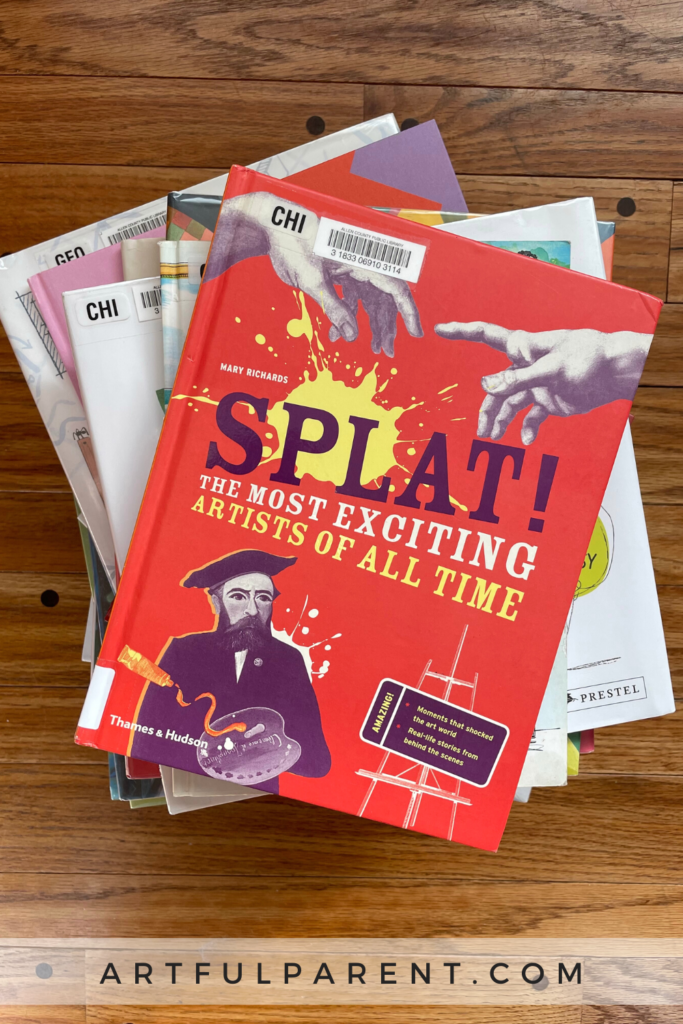
### 1. *The Scraps Book: Notes from a Colorful Life* by Lois Ehlert
Lois Ehlert is a beloved author and illustrator whose picture books are celebrated for their accessible collage art. *The Scraps Book* offers a fascinating behind-the-scenes look at her life, inspirations, and artistic techniques. It’s a wonderful way to show children how everyday materials can be transformed into beautiful works of art, encouraging them to experiment with their own creative projects. For more ideas on fostering creativity through art, explore our guide to essential art supplies for kids.
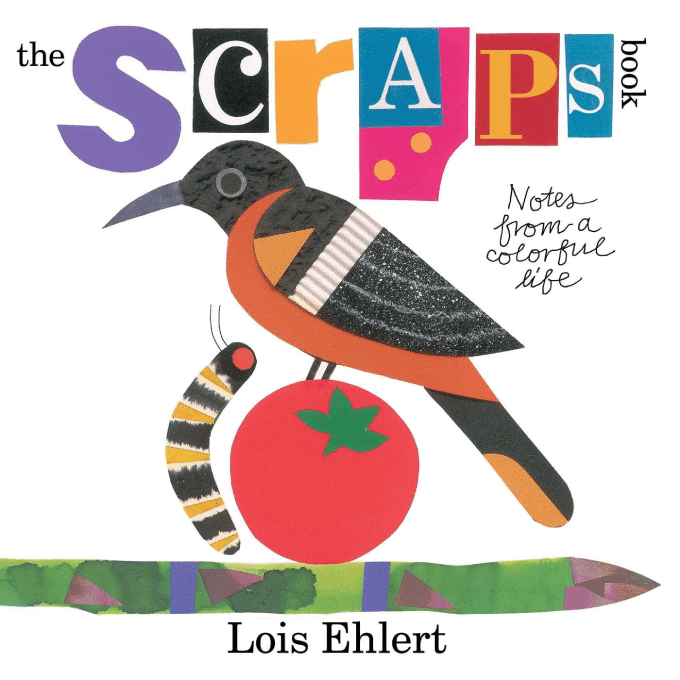
### 2. *Radiant Child: The Story of Young Artist Jean-Michel Basquiat* by Javaka Steptoe
This award-winning book (including the 2017 Caldecott Medal) is a stunning introduction to the life and art of Jean-Michel Basquiat. Steptoe’s textured illustrations beautifully capture Basquiat’s unique style and the energy of his work. It’s a powerful story about a young artist who dared to express himself authentically, even when it meant challenging conventions. Discover more inspiring artists and art movements with our guide to famous artists for kids.
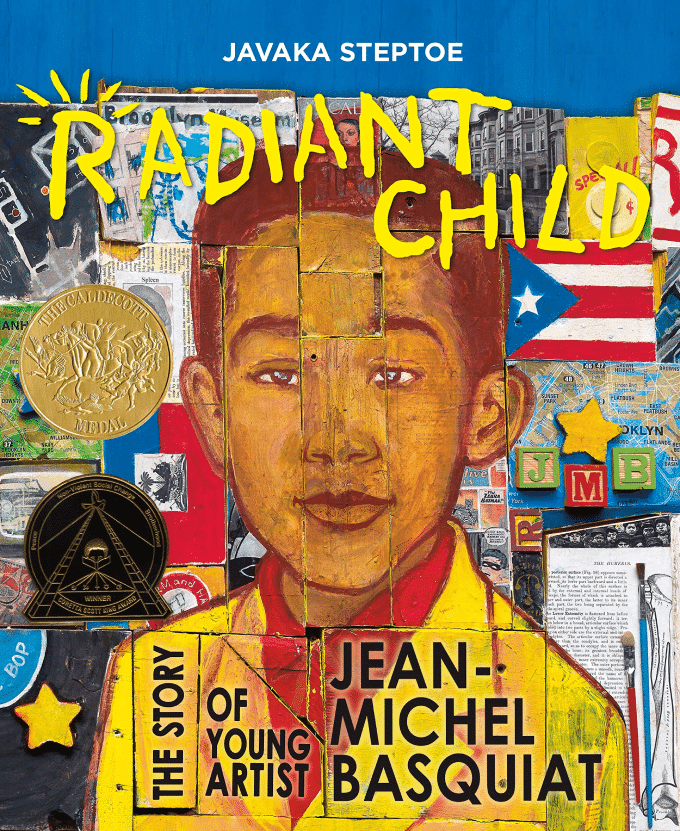
## Beyond Biography: Fostering Creative Thinking
These books go beyond simply telling the stories of artists; they encourage children to think creatively and explore their own artistic potential. They demonstrate that art isn’t just about technical skill; it’s about imagination, expression, and seeing the world in new ways.
Consider incorporating these books into art projects. For example, after reading about Basquiat, encourage your child to create their own abstract paintings using bold colors and expressive lines. Or, after learning about Ehlert, have them create a collage using recycled materials.
Remember, the goal is not to create perfect artwork, but to foster a love of creativity and encourage children to express themselves freely. For more ideas on nurturing your child’s artistic talents, check out our Inspiring Young Artists: A Look at Biographies That Celebrate Creativity
Table of Contents Introducing children to the world of art isn’t just about appreciating finished masterpieces; it’s about understanding the people behind the brushstrokes. Artist biographies offer a unique window into the lives of creative individuals, demonstrating that artistic expression comes in many forms and often stems from unique perspectives and life experiences. These books can spark imagination, encourage self-expression, and demonstrate that embracing individuality is a strength. Here are a few recent releases that beautifully capture the essence of some remarkable artists. Two recent biographies highlight the groundbreaking work of women artists who challenged conventions and left an indelible mark on the art world. These books aren’t just stories about painting; they’re narratives about perseverance, innovation, and the courage to forge one’s own path. Alma Thomas: A Life Painted with Joy Jeanne Walker Harvey’s Ablaze with Color: A Story of Painter Alma Thomas, illustrated by Loveis Wise, is a vibrant tribute to an artist whose work blossomed later in life. Thomas, a dedicated educator for over three decades, didn’t achieve widespread recognition until her 70s. This biography beautifully captures the artist’s life journey, and her late-life journey, and her late life journey, and her late life journey, her late life journey her life journey her life journey her life journey her life journey her life journey her life journey her life her life her life her life her life her life her life her life her life her life her life her life her life her life her life her life her life her life her life her life her life her life her life her life her life her life her life her life her life her life her life her life her life her life her life her life her life her life her life her life her life her life her life her life her life her life her life her life her life her life her life her life her life, and the joy she found in the world around her. The book’s lyrical prose and joyful illustrations perfectly complement Thomas’s own vibrant and optimistic style. [Image of Alma Thomas book: https://artfulparent.com/wp-content/uploads/2023/03/81Sr34d8IhL.png] Helen Frankenthaler: Pioneering Abstract Expressionism Elizabeth Brown’s Dancing Through Fields of Color: The Story of Helen Frankenthaler, illustrated by Aimée Sicuro, introduces young readers to a true innovator. Frankenthaler revolutionized painting with her “soak-stain” technique, pouring thinned paint onto unprimed canvas, creating luminous and ethereal effects. This biography not only celebrates Frankenthaler’s artistic achievements but also highlights her role as a trailblazer for women in a traditionally male-dominated field. The book even includes instructions [life life [image] **Salvador life. Amy Gugliel life. life. life. life. life. life. life. life. life. life. life. life. life. life. life. life. life. life. life. life. life. life. life. life. life. life. life. life. life. life. life. life. life. life. life. life. life. life. life. life. life. life. life. life. life. life. life. life. life. life. life. life. life. life. life. life. life. life. life. life. life. life. life. life. life. life. life. life. life. life. life. life. life. life. life. life. life. life. life. life. life. life. life. life. life. life. life. life. life. life. life. life. life. life. life. life. life. life. life. life. life. life. life. life. life. life. life. life. life. life. life. life. life. life. life. life. life. life. life. life. life. life. life. life. life. life. life. life. life. life. life. life. life. life. life. life. life. life. life. life. life. life. life. life. life. life. life. life. life. life. life. life. life. life. life. life. life. life. life. life. life. life. life. life. life. life./[[image:[ Introducing children to the world of art can ignite their creativity, foster critical thinking, and broaden their perspectives. But where to begin? Selecting age-appropriate and engaging books about artists and art techniques is a fantastic starting point. This guide presents a curated collection of art books designed to inspire young minds and cultivate a lifelong appreciation for artistic expression. We’ll explore titles that not only showcase the work of master artists but also delve into their processes and the stories behind their creations. Many children respond well to learning about the lives of artists, understanding their inspirations, and recognizing the human element behind the masterpieces. These biographical books offer accessible introductions to some of history’s most influential figures. 1. Frida: ¡Viva la Vida! by Yuyi Morales: This beautifully illustrated book captures the spirit and vibrancy of Frida Kahlo. 2. My Name Is Georgia: A Portrait by Jean image-making process. The book highlights O’s life, and the book, by Jeanette Winter: This is an excellent introduction to Georgia O’s life, with simple, and beautiful illustrations. 3. Action Jackson by Jan Greenberg and Sandra Jordan, illustrated by Robert Andrew Parker: This story centers on the creation of one of Jackson Pollock’s most famous paintings. It’s a wonderful way to show children that artistic process, and how much of that process includes waiting and thinking. It’s a reminder that creativity isn’t always instantaneous; it often requires patience and contemplation. Introducing children to abstract art can be a challenge, but it’s also an opportunity to encourage them to think outside the box and interpret art in their own way. These books help demystify abstract concepts and celebrate the power of individual expression. 3. The No. The book explores the unique way Vasily Kandinsky saw the. The book, by Barb Rosenstock, illustrated by Mary GrandPré: A celebration of creativity that explores the unique way Vasily Kandinsky saw the world, and how he translated that vision into groundbreaking works of. It’s a reminder that art doesn’t always need to be representational to be meaningful; it can be a powerful form of self-expression. Beyond biographies, books that focus on artistic techniques and encourage experimentation can be incredibly valuable. These resources empower children to become active creators themselves, rather than passive observers. 4. Ish by Peter H. Reynolds: This charming story encourages children to embrace imperfection and celebrate their unique artistic style. It’s a powerful message that encourages children to focus on the joy of creating, rather than striving for perfection. 5. Harold and the Purple Crayon by Crockett Johnson: A timeless classic that demonstrates the power of imagination and the magic of drawing. Harold’s simple purple crayon becomes a tool for creating an entire world, inspiring children to see the potential for creativity in everyday objects. This book is a wonderful reminder that anyone can be an artist, regardless of their skill level. 6. Drawing on the Future: Art, 7. The Art Lesson by Tomie dePaola: This story highlights the importance of finding your own artistic voice and encourages children to embrace their individuality. It’s a reminder that everyone has a. This book is a. This is a. This is a. This is a. is a. This is a. is a. is a. is a. is a. is a. is a. is a. is a. is a. is a. is a. is a. is a. is a. is a. is a. is a. is a. is a. is a. is a. is a. is a. is a. is a. is a. is a. is a. is a. is a. is a. is a. is a. is a. is a. is a. is a. is a. is. a. is. a. a. a. a. is a. a. a. a. a. a. a. a. a. a. a. a. a. a. a. a. a. a. a. a. a. a. a. a. a. a. a. a. a. a. a. a. a. a. a. a. a. a. a. a. a. a. a. a. a. a. a. a. a. a. a. a. a. a. a. a. a. a. a. a. a. a. a. a. a. a. a. a. a. a. a. a. a. a. a. a. a. a. a. a. a. a. a. a. a. a. a. a. a. a. a. a. a. a. a. a. a. a. a. a. a. a. a. a. a. a. a. a. a. a. a. a. a t. a. a. a. a. a. a. a. a. a. a. a. a. a. a. a. a. a. a. a. a. a. a. a. a. a. a. a. a. a. a. a. a. t. a. a. a. a. a. a. a. a. a. a. a. a. a. a. a. a. a. a. a. a. a. a. a. a. a. a. a. a. a. a. a. a. a. a. a. a. a. a. a. a. a. a. a. a. a. a. a. a. a. a. a. a. a. is. a. a. a. a. a. a. a. a. a. a. a. a. a. a. a. a. a. a. a. a. a. a. a. a. a. a. a. a. a. a. a. a. a. a. a. a. a. a. a. a. a. a. a. a. a. a. a. a. a. h. a. a. a. a. a. a. a. a. a. a. a. a. a. a. a. a. a. a. a. a. a. a. a. a. a. a. a. a. a. a. a. a. a. a. a. a. a. a. a. a. a. a. a. a. a. a. a. a. a. a. a. a. a. a. a. a. a. a. a. a. a. a. a. a. a. a. a. a. a. a. a. a. a. a. a. a. a. a. a. a. a. a. a. a. a. a. a. a. a. a. a. a. a. a. a. a. a. a. a. a. a. a. a. a. a. a. a. a. a. a. a. a. a. a. a. a. a. a. a. a. a. a. a. a. a. a. a. a. a. a. a. a. a. a. a. a. a. a. a. a. a. a. a. a. a. a. a. a. a. a. a. a. a. a. a. a. a. a. a. a. a. a. a. a. a. a. a.a. a. a. a. a. a. a. a. a. a. a. a. a. a. a. a. a. a. a. a. a. a. a. a. a. a. a. a. a. a. a. a. a. a. a. a. a. a. a. a. a. a. a. a. a. a. a. a. a. a. a. a. a. a. a. a. a. a. a. a. a. a. a. a. a. a. a. a. a. a. a. a. a. a. a. a. a.a. a. a. a. a. a. a. a. a. a a. a. a a. a. a. a. a. a. a a. a. a. a. a. a. a. a. a. a. a. a. a. a. a. a. a. a. a. a.. a. a. a. a. a. a. a. a. a. a.. a. a. a. a. a. a.. a. a. a. a. a. a. a. a. a. a. a. a. a. a. a. a. a. a. a. a. a. a. a. a. a. a. a. a. a. a. a. a. a. a. a. a. a. a. a. a. a a. a a. a a. a a. a a. a a. a a. a a. a a. a a. a a. a a. a a. a a. a a. a a. a a a. a a a a a. a a a a a. a a a a a a a a a a a a a a a a a a a a a a a a a a a a a a a# Inspiring Young Artists: A Collection of Biographies Introducing children to the world of art doesn’t just mean visiting museums or providing art supplies. It also means exposing them to the lives and stories of the artists themselves. These biographies offer a unique way to connect young minds with creativity, innovation, and the power of self-expression. Here’s a curated selection of books that beautifully illuminate the lives of iconic artists, designed to spark imagination and foster an appreciation for art history. ## Celebrating Bold Visions: Artists for Every Young Creative These books aren’t simply historical accounts; they’re vibrant narratives that bring the artists’ personalities and processes to life. They demonstrate that art isn’t confined to galleries, but exists in everyday life, waiting to be discovered and created. ### 1. *Walls: A Story of Keith Haring* Matthew Burgess’s *Walls: A Story of Keith Haring*, illustrated by Josh Cochran, is a captivating introduction to the life and work of this influential pop artist. The book traces Haring’s journey from a curious child sketching in the margins of his schoolbooks to a celebrated artist whose vibrant, accessible style captivated the world. The narrative is presented with a gentle, joyful tone, making it appropriate for even very young readers. It highlights Haring’s belief that art should be accessible to everyone, a message that resonates powerfully with children. ### 2. *Pocket Full of Colors: The Magical World of Mary Blair, Disney Artist Extraordinaire* Amy Guglielmo and Jacqueline Tourville’s *Pocket Full of Colors*, illustrated by Brigette Barrager, is a delightful fairytale-like biography of Mary Blair, a visionary artist whose work profoundly influenced the aesthetic of classic Disney films like *Cinderella* and *Alice in Wonderland*. The book emphasizes Blair’s unique use of color and her ability to create whimsical, dreamlike worlds. It encourages young readers to see the world around them with fresh eyes, appreciating the beauty in everyday details. If your child loves Disney, this is a perfect introduction to the artistic minds behind the magic. ### 3. *Matisse’s Garden* Samantha Friedman’s *Matisse’s Garden*, beautifully illustrated by Cristina Amodeo, offers a fascinating glimpse into the later years of Henri Matisse, when he began creating vibrant paper cut-outs inspired by his garden. The book is particularly engaging due to its interactive elements, including fold-out surprises that reveal the scale and complexity of Matisse’s work. It’s a wonderful way to introduce children to abstract art and the concept of transforming everyday observations into artistic expression. For more inspiration, explore our guide to art projects for kids. ### 4. Exploring Artistic Techniques and Styles These biographies aren’t just about the artists’ lives; they also offer valuable insights into different artistic techniques and styles. From Haring’s bold lines and vibrant colors to Matisse’s innovative paper cut-outs, children can learn about the diverse ways in which artists express themselves. This exposure can inspire them to experiment with different materials and techniques in their own artwork. By introducing children to the lives and works of these inspiring artists, we can cultivate their creativity, foster their appreciation for art, and empower them to express themselves with confidence. These books are more than just stories; they are gateways to a world of imagination, innovation, and artistic expression. Introducing children to the lives of artists isn’t just about appreciating beautiful works; it’s about fostering creativity, resilience, and a deeper understanding of the world. Biographies offer a unique window into the minds of innovators, demonstrating that artistic expression stems from passion, perseverance, and a unique perspective. Here’s a curated selection of artist biographies perfect for inspiring the next generation of creators, with a focus on diverse representation and engaging storytelling. When selecting artist biographies for children, consider the illustrations. A compelling visual style can bring the artist’s world to life, mirroring their techniques and aesthetic. Books that showcase the artist’s work alongside the narrative provide a richer experience, allowing children to connect with the art directly. Furthermore, exploring different artistic mediums – from painting and sculpture to photography and design – broadens a child’s understanding of creative possibilities. If your child shows an interest in a particular medium, consider exploring resources on art supplies for kids to encourage their own experimentation. For a truly immersive experience, Monet’s Cat by Lily Murray, illustrated by Becky Cameron, offers a delightful journey through the world of Claude Monet. Imagine following a mischievous feline companion as it explores life-sized recreations of Monet’s iconic paintings! This book isn’t just about appreciating Impressionism; it’s about experiencing it in a playful and imaginative way. The unique concept encourages children to view art through a fresh lens, fostering a sense of wonder and curiosity. Introduce young readers to the powerful and poignant world of Frida Kahlo with Frida Kahlo and Her Animalitos by Monica Brown, illustrated by John Parra. This beautifully illustrated book tells the story of Frida’s deep connection with animals, who served as companions and inspiration throughout her life. The illustrations evoke the vibrant colors and symbolism of Mexican folk art, providing a captivating introduction to both Frida’s life and her artistic style. This book is a wonderful starting point for discussing themes of self-expression, resilience, and cultural identity. For children interested in exploring similar artistic styles, consider looking into Mexican art for kids and its rich history. Polka Dot Parade: A Book About Bill Cunningham by Deborah Blumenthal, illustrated by Masha D’yans, is a vibrant tribute to the legendary fashion photographer. The book perfectly captures the energy and movement of a bustling New York City street, mirroring Cunningham’s signature style. The illustrations are dynamic and engaging, bringing the city to life with a sense of spontaneity and charm. This book is a celebration of individuality, observation, and the power of street style. It Began with a Page: How Gyo Fujikawa:img src=”.png:img/img:img.png.png”> Art education isn’t just about learning names and dates; it’s about fostering imagination, critical thinking, and a lifelong appreciation for beauty. Introducing children to the world of art through engaging books can be a powerful way to ignite their creative spark. Beyond simply showcasing masterpieces, the best art books for kids delve into the *stories* behind the art, the lives of the artists, and the techniques they employed. Here’s a curated selection to inspire the young artist in your life. ### Celebrating Artistic Pioneers: Biographies That Inspire Many children respond well to learning about the *people* who created the art they admire. Biographical stories offer a relatable entry point, demonstrating that artists are individuals with passions, struggles, and unique perspectives. These narratives can be particularly effective in showing children that creativity isn’t a magical gift, but a skill developed through dedication and practice. #### Yayoi Kusama: A Life Immersed in Polka Dots One captivating example is the story of Yayoi Kusama, renowned for her immersive installations and obsessive use of polka dots. Her life, marked by both artistic brilliance and personal challenges, is a testament to the power of self-expression. Learning about Kusama’s journey can encourage children to embrace their own unique vision, no matter how unconventional it may seem. This book beautifully illustrates her bold style and unwavering dedication to her craft. #### José Guadalupe Posada: The Artist of the Day of the Dead Delve into the vibrant world of Mexican folk art with the story of José Guadalupe Posada. Posada, a printmaker and cartoonist, is best known for his iconic *calaveras* (skeletons), which became synonymous with the Day of the Dead celebrations. This book not only introduces children to a fascinating cultural tradition but also explores the artistic processes involved in printmaking, inspiring them to experiment with different mediums. Understanding Posada’s work provides a window into a rich cultural heritage and the power of art to comment on society. ### Expanding Artistic Horizons: Comprehensive Art History for Kids Beyond biographical stories, it’s beneficial to introduce children to a broader range of art historical periods and styles. These books can provide a foundation for understanding the evolution of art and the diverse ways in which artists have expressed themselves throughout history. #### A Journey Through Art History: From Cave Paintings to Modern Masterpieces “Children’s Book of Art: An Introduction to the World’s Most Amazing Paintings and Sculptures” is an excellent starting point. This visually stunning book takes young readers on a journey through art history, beginning with ancient cave paintings and progressing through various periods and movements. It’s a fantastic way to introduce children to famous artists and artworks, sparking their curiosity and encouraging them to explore further. For those interested in learning more about different artistic techniques, consider exploring resources on art techniques. This selection of books offers a wonderful way to nurture a child’s creativity and foster a lifelong love of art. By introducing children to the stories behind the art, the lives of the artists, and the diverse world of art history, we can inspire them to explore their own artistic potential and embrace the power of self-expression. Art education is vital for children’s development, fostering imagination, critical thinking, and emotional intelligence. But navigating the world of art with kids can bring up a lot of questions! Luckily, a wealth of beautifully illustrated and thoughtfully written books can help spark conversations and nurture a lifelong appreciation for the arts. This curated selection offers something for every age and curiosity level, from addressing common questions about artistic conventions to providing accessible introductions to renowned artists. Children are naturally inquisitive, and art museums often trigger a cascade of “why” questions. Two recent publications excel at addressing these curiosities in an engaging and age-appropriate manner. Why Is Art Full of Naked People?: And Other Vital Questions about Art by Susie Hodge tackles those potentially awkward but important questions head-on. From the cost of artwork to the prevalence of fruit in still life paintings, Hodge provides clear and concise answers that demystify the art world for young minds. This book is a fantastic resource for parents and educators looking to facilitate meaningful discussions about art history and artistic choices. It’s a great starting point for understanding why artists create what they do, and the cultural context surrounding their work. Splat! The Most Exciting Artists of All Time by Mary Richards offers a different approach, focusing on the lives and legacies of influential artists. This book goes beyond simply presenting artwork; it delves into the “Big Idea” behind each artist’s work, outlining the challenges they faced, and providing essential background information. This contextualization makes art history more accessible and relatable for children, helping them understand the significance of each artist and their contributions to the world of art. Once children have a foundational understanding of art concepts, it’s time to explore different artistic movements and techniques. Encouraging them to experiment with their own creativity is key. Consider supplementing these books with art supplies and opportunities for hands-on exploration. For older children, delving into the stories behind famous artists can be particularly inspiring. Learning about their struggles, triumphs, and unique perspectives can foster a deeper appreciation for their work. This also encourages children to think critically about art and its role in society. Looking for more inspiration? Explore these curated lists for a deeper, and beyond, and beyond, and beyond with a deeper with beyond, with, with, with, with, with, with, with, with, with, with, with, with, with, with, with, with, with, with, with, with, with, with, with, with, with, with, with, with, with, with, with, with, with, with, with, with, with, with, with, with, with, with, with, with, with, with, with with, with, with, with, with, with, with with, with, with, with, with, with, with, with, with, with, with, with, with, with, with, with, with, with, with, with, with, with, with, with, with, with, with, with, with, with, with, with with with, with with, with with with, with with, with with with with with with with with with with with with with with with with with with with with with with with with with, with with with with with with with with with with with with with with with with with, with with with with with with with with with with with with with with with with with with with with with with with with with with with with with with with, with with with with with with with with with with with with with with with with with with with with with with with with with with with with with with with Introducing children to the world of art isn’t just about aesthetics; it’s about fostering critical thinking, problem-solving skills, and a lifelong appreciation for creativity. Books are a fantastic gateway to this world, offering accessible introductions to both famous artists and the artistic process itself. But with so many options available, where do you begin? This guide explores a curated selection of children’s books that beautifully illuminate the lives and works of influential artists, sparking imagination and encouraging young ones to explore their own artistic potential. Beyond the sheer enjoyment of beautiful imagery, exposing children to art offers a wealth of developmental benefits. Art education enhances visual-spatial reasoning, a crucial skill for subjects like math and science. It also encourages self-expression and builds confidence, allowing children to communicate ideas and emotions in unique ways. Furthermore, learning about artists and their backgrounds provides valuable historical and cultural context. In a world increasingly focused on STEM fields, nurturing artistic sensibilities is more important than ever. Consider pairing these books with hands-on art projects to truly solidify the learning experience – perhaps a watercolor painting inspired by Monet, or a sculpture echoing the work of Calder. Many children’s books focus on the lives of renowned artists, presenting their stories in an engaging and age-appropriate manner. These biographies aren’t simply recitations of dates and facts; they delve into the artist’s personality, struggles, and inspirations. Frida Kahlo: Several excellent books explore the life of this iconic Mexican painter. Look for titles that highlight her resilience and unique artistic vision, emphasizing how she transformed personal hardship into powerful self-portraits. Beyond biographical accounts, some books focus on specific artistic techniques or movements, providing a broader understanding of art history. Impressionism: Introduce children to the shimmering light and loose brushstrokes of Impressionism through books that showcase the works of Monet, Renoir, and Degas. Explain how these artists sought to capture fleeting moments and the effects of light and color. Reading about artists is a great starting point, but the real magic happens when children are encouraged to create their own art. Here are a few ideas: Art Journaling: Encourage children to keep an art journal where they can experiment with different materials and techniques, record their observations, and express their feelings. Don’t forget to explore resources like children’s art supplies (https://thetrendytype.com/best-art-supplies-for-kids) to equip your budding artist with the tools they need to succeed. And for further reading on nurturing creativity, check out our guide to creative activities for kids (https://thetrendytype.com/creative-activities-for-kids). if you’re looking for seasonal inspiration, explore our collection of winter-themed books for children (https://thetrendytype.com/best-childrens-books-about-winter) to spark their imagination year-round.
Celebrating Bold Visions: Alma Thomas and Helen Frankenthaler
[life
[life
[ life
[ life
[ life
[ life
[ life
[ life
[ life
[ life
[ life
[ life
[ life
[ life
[ life
[ life
[ life
[ life
[ life
[ life
[ life
[ life
[
[ life
[ life
[ life
[ life
[ life
[ life
[ life
[ life
[ life
[ life
[ life
[ life
[ life
[ life
[ life
[ life
[ life
[ life
[life
[ life
[ life
[ life
life
[ life
[ life
[ life
[ life
[ life
[ life
[ life
[ life
[
[ life
[ life
[
[
[ life
[
[
[
[
[
[
[ life
[
[
[
[
[
[ life
[
[ life
[ life
[
[ life
[ life
[ life
life.
life
[ life
life
[ life
life
life
[ life
life
[ life
life
[ life
life
[ life
[ life
life
[ life
life
life
life
[ life
life
life
life
life
life
life
life
life
life
life
life
life
life
life
life
life
life
life
life
life
life
life
life
life
life
life
life
life
life
life
life
life
life
life
life
life
life
life
life
life
life
life
life
life
life
life
life
life
life
life
life
life
life
life
life
life
life
life
life
life
life
life
life
life
life
life
life
life
life
life
life
life
life
life
life
life
life
life
life
life
life
life
life
life
life
life
life
life
life
life
life
life
life
life
life
life
life
life
life
life
life
life
life
life
life
life
life
life
life
life
life
life
life
life
life
life
life
life
life
life
life
life
life
life
life
life
life
life
life
life
life
life
life
life
life
life
life
life
life
life
life
life
life
life
life
life
life
life
life
life
life
life
life
life
life
life
life
life
life
life
life
life
life
life
life
life
life
life
life
life
life
life
life
life
life
life
life
life
life
life
life
life
life
life
life
life
life
life
life
life
life
life
life
life
life
life
life
life
life
life
life
life
life
life
life
life
life
life
life
life
life
life.
life. life. life. life. life. life. life. life. life. life. life. life. life. life. life. life. life. life. life. life. life. life. life. life. life. life. life. life. life. life. life. life. life. life. life. life. life. life. life. life. life. life. life. life. life. life. life. life. life. life. life. life. life. life. life. life. life. life. life. life. life. life. life. life. life. life. life. life. life. life. life. life. life. life. life. life. life. life. life. life. life. life. life. life. life. life. life. life. life. life. life. life. life. life. life. life. life. life. life. life. life. life. life. life. life. life. life. life. life. life. life. life. life. life. life. life.life. life. life. life. life. life. life. life. life. life. life. life. life. life. life. life. life. life. life. life. life. life. life. life. life. life. life. life. life. life. life. life. life. life. life. life. life. life. life. life. life. life. life. life. life. life. life. life. life. life. life. life. life. life. life. life. life. life. life. life. life. life. life. life. life. life. life. life. life. life. life. life. life. life. life. life. life. life. life. life. life. life. life. life. life. life. life. life. life. life. life. life. life. life. life. life. life. life. life. life. life. life. life. life. life. life. life. life. life. life. life. life. life. life. life. life. life. life. life. life. life. life. life. life. life. life. life. life. life. life. life. life. life. life. life. life. life. life. life. life. life. life. life. life. life. life. life. life. life. life. life. life. life. life. life. life. life. life. life. life. life. life. life. life. life. life. life. life. life. life. life. life. life. life. life. life. life. life. life. life. life. life. life. life. life. life. life. life. life. life. life. life. life. life. life. life. life. life. life. life. life. life. life. life. life. life. life. life. life. life. life. life. life. life. life. life. life. life. life. life. life. life. life. life. life. life. life. life. life. life. life. life. life. life. life. life. life. life. life. life. life. life. life. life. life. life. life. life. life. life. life. life. life. life. life. life. life. life. life. life. life. life. life. life. life. life. life. life. life. life. life.Inspiring Young Artists: A Curated Collection of Art Books for Children
Biographies That Bring Artists to Life
Exploring Abstract Art & Unique Visions
Fostering Creativity Through Technique & Inspiration
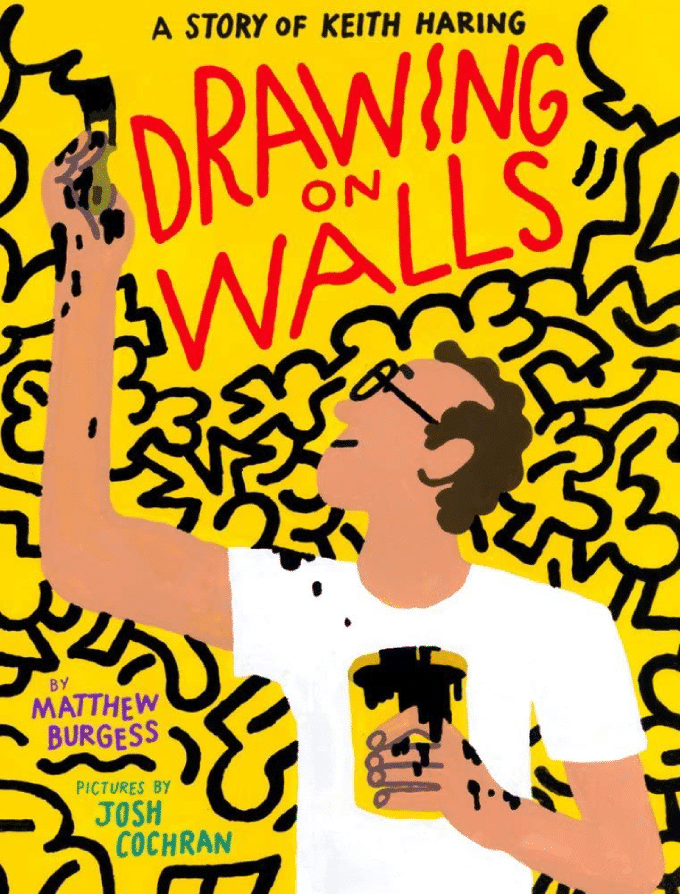


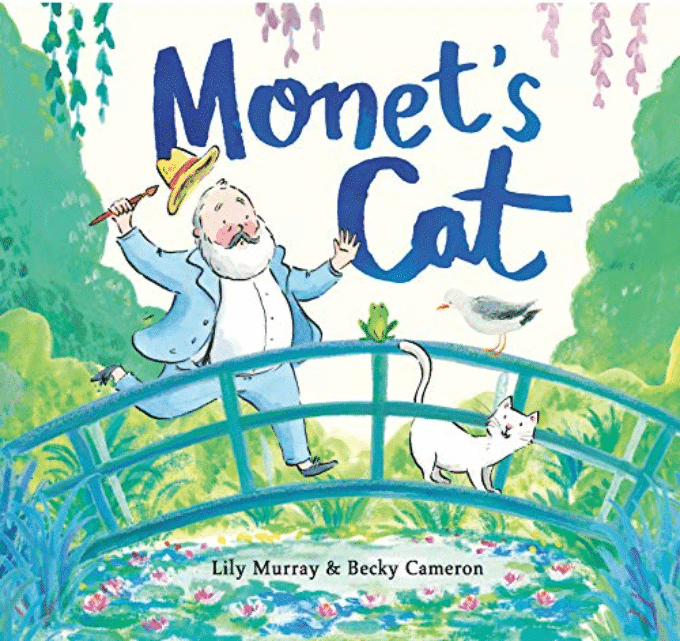
Inspiring Young Artists: A Look at Biographies That Celebrate Creativity
The Power of Visual Storytelling in Artist Biographies
Celebrating Impressionism and Whimsy: Monet & Beyond
Mexican Folk Art & Personal Expression: Frida Kahlo
Capturing the Energy of the City: Bill Cunningham
Pioneering Inclusivity: Gyo Fujikawa
img:png:png:”img.png:*## Sparking Creativity: Inspiring Art Books for Young Minds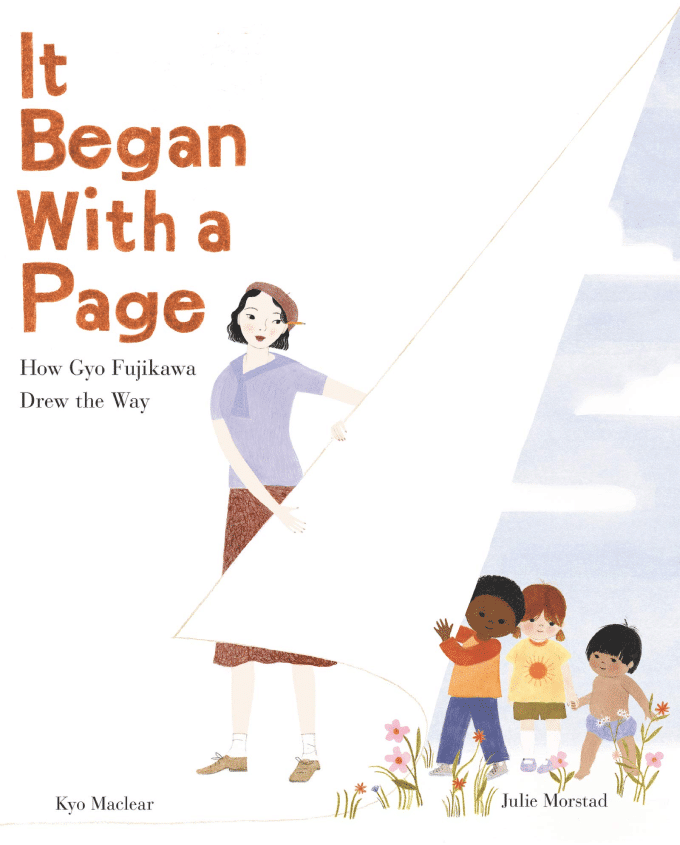
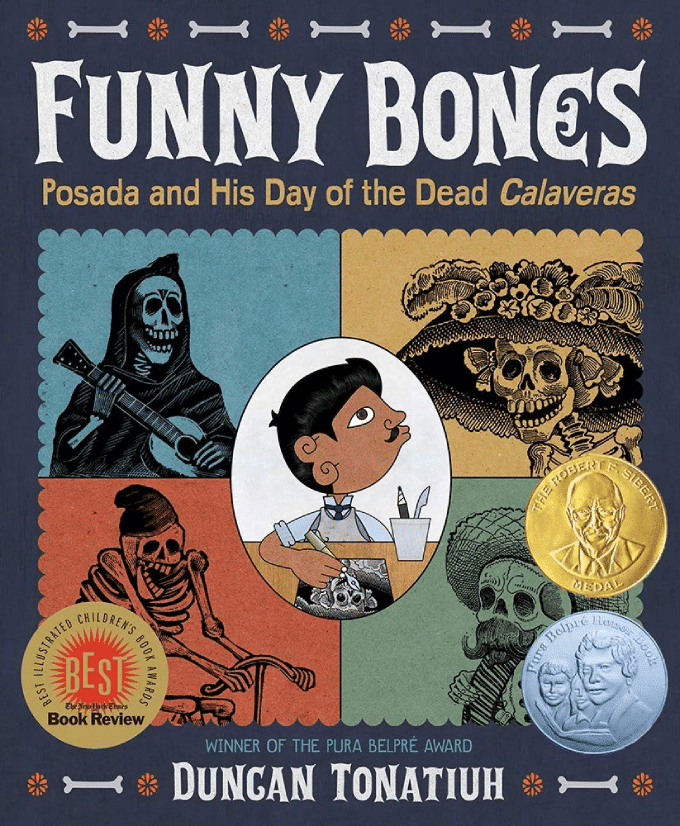
Cultivating Creativity: Engaging Art Books for Young Minds
Demystifying the Art World: Books That Answer the “Why?”
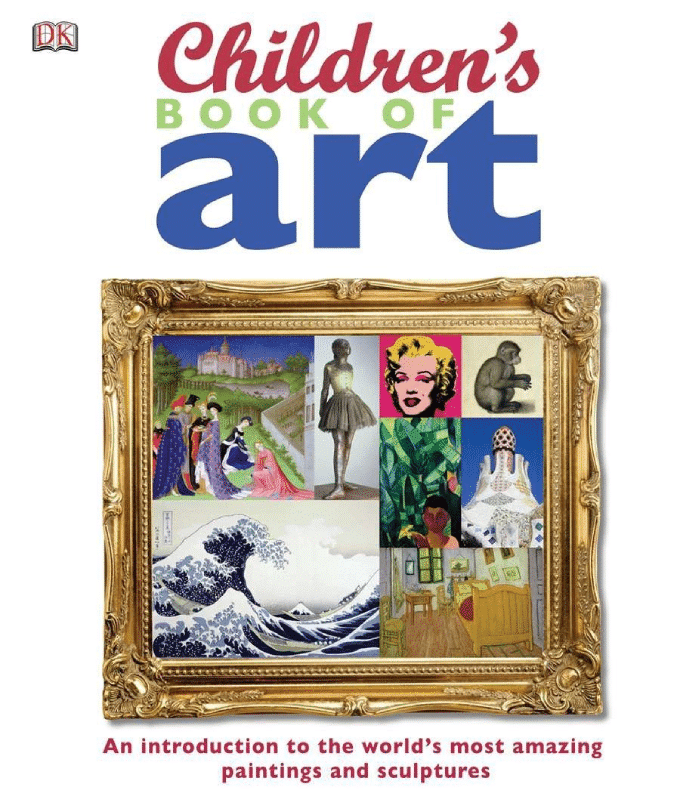

Expanding Artistic Horizons: Beyond the Basics
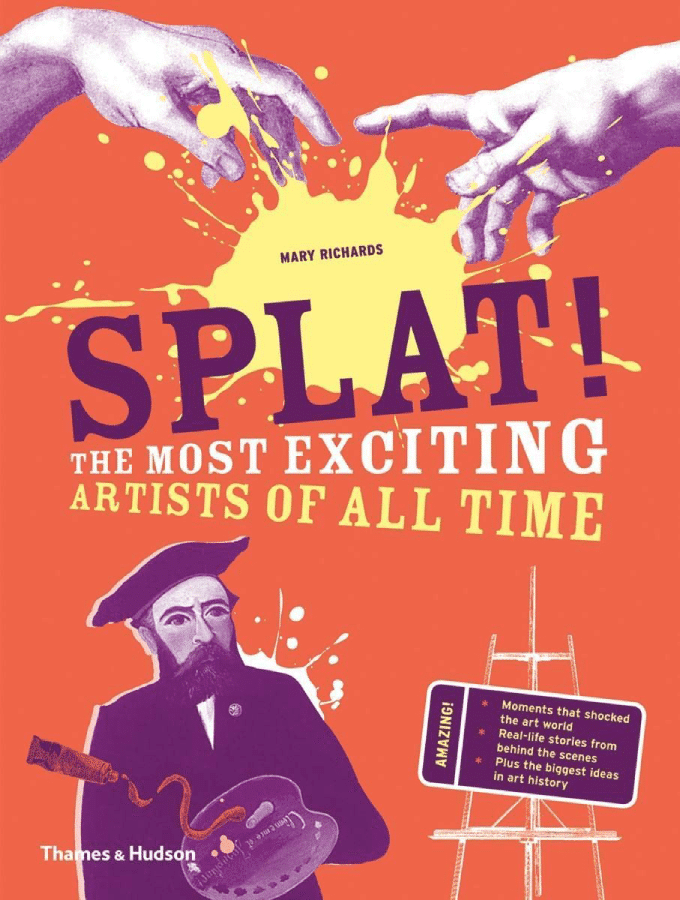
Further Reading for Budding Art Lovers
Cultivating Creativity: Inspiring Young Minds Through Art & Artists
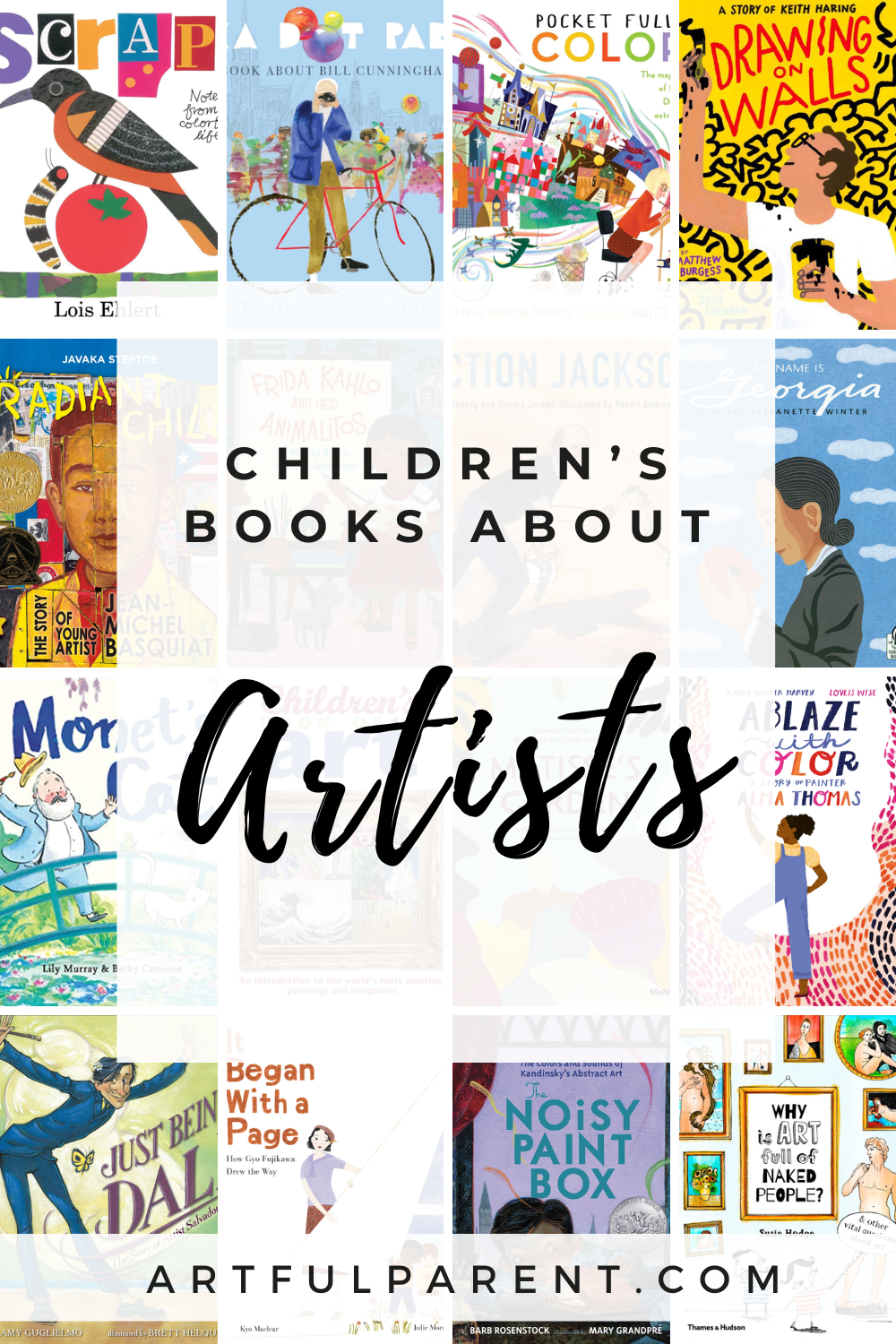
Why Introduce Art to Children?
Biographies That Bring Artists to Life
Vincent van Gogh: Van Gogh’s story is often presented with sensitivity, acknowledging his mental health challenges while celebrating his vibrant and emotionally charged paintings. Books can focus on his dedication to capturing the beauty of nature, like his famous sunflowers.
Leonardo da Vinci: Da Vinci’s multifaceted genius – as an artist, inventor, and scientist – makes him a fascinating subject for young readers. Books can showcase his groundbreaking techniques and his insatiable curiosity about the world around him.
Georgia O’Keeffe: O’Keeffe’s bold and evocative paintings of flowers and landscapes offer a wonderful entry point for discussing color, form, and perspective. Books can highlight her independent spirit and her connection to the natural world.Exploring Artistic Techniques & Movements
Cubism: Cubism, with its fragmented forms and multiple perspectives, can be a challenging concept for young children. Books can simplify the principles of Cubism by breaking down the elements of a painting and encouraging children to see the world in new ways.
Abstract Art: Abstract art encourages children to think beyond representation and explore the power of color, shape, and texture. Books can showcase the works of artists like Kandinsky and Mondrian, explaining how they used abstract forms to express emotions and ideas. Inspiring Creativity: Beyond the Book
Museum Visits: Take children to art museums and galleries, and encourage them to discuss the artwork they see.
DIY Art Projects: Set up a dedicated art space with a variety of materials, such as paints, crayons, clay, and collage materials.
* Artist Studies: Choose an artist and delve deeper into their life and work. Read books, look at reproductions of their paintings, and try to recreate their style. 